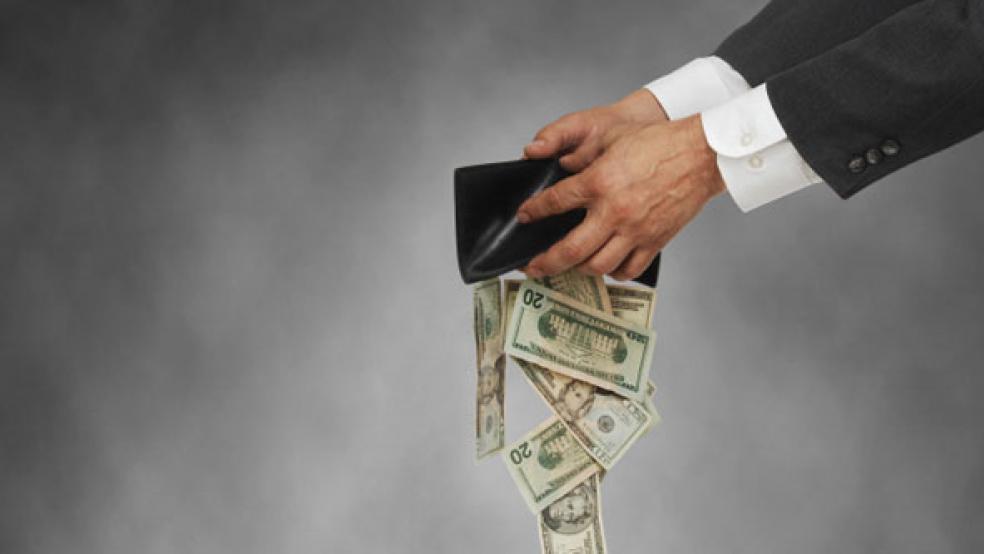A new report by the non-partisan Tax Foundation shows that America has higher capital gains tax rates than other industrialized countries. Nevertheless, President Obama is pushing Congress to raise taxes on capital gains still further. America’s tax treatment of capital gains already raises the cost of capital and reduces investment, and raising rates would create more disincentives to business investment and growth.
America’s 29 percent average combined capital gains top tax rate is more than 5 percentage points higher than the Organization for Economic Co-operation and Development’s weighted average of 23 percent. This makes America’s top rate the sixth highest among the 34 OECD countries. Nine OECD countries do not tax capital gains income.
Related: Tax Loopholes the President Left Out - for Now
The data show that, at 33 percent, California has the highest combined state and federal tax rate on capital gains. Only two OECD nations have a higher top marginal rate than California—Denmark (42 percent) and France (34.4 percent).
Nine states do not tax capital gains income, but their residents are still subject to the federal 20 percent top tax rate on capital gains. An additional 3.8 percent tax on unearned income for households with over $200,000 in annual income (single filing) or $250,000 (joint filing) helps fund the Affordable Care Act, bringing the total federal capital gains tax rate close to 24 percent.
When capital gains taxes are applied to income already subject to America’s 39 percent top corporate tax rate, the combined tax burden on U.S. gains can reach 56 percent. High taxes are one reason that some U.S. corporations are moving more of their operations and staff overseas.
Kyle Pomerleau, the author of the Tax Foundation report, explained why levying high capital gains taxes harms economic growth. He told me, “High taxes on capital income increase the cost of capital, which reduces the incentive to invest. Lower investment means a smaller capital stock, lower productivity, and lower wages for workers. When lawmakers look to reform our tax code they need to understand that capital taxes should be lower, whether that means cutting the corporate tax rate, cutting the capital gains tax rate, or some combination of the two.”
Related: The 10 Worst States for Taxes in 2015
President Obama believes otherwise. In his State of the Union Address, he proposed raising the top tax rate on capital gains and dividends to 28 percent from the current rate of 24 percent. The tax rate was 15 percent when he took office.
Thankfully, members of Congress did not take the president’s proposal seriously. Most were elected on a platform of reducing taxes, rather than raising them. There is good reason that investment income is taxed at a lower rate than is other income, and lowering the rate further would benefit the economy.
Economic evidence shows that increasing taxes on an activity leads to less of that activity. Higher taxes on investment income result in lower investment—which means less capital to fund growth is available for large corporations, small businesses, and innovative entrepreneurs. Taxes on U.S. investment are higher than taxes abroad, so some investment capital moves to lower-tax countries.
On the individual side, higher taxes on investments lower the returns from retirement funds that many individuals—especially retirees—rely on for income. Instead of evaluating investments purely on merits, individuals have to plan the timing of their purchases and sales based on tax implications. Some avoid selling assets altogether and pass on assets to heirs, a move that results in no tax going to the Treasury. Others sell assets only when they have a loss in another asset. These tax avoidance methods are legal but time-consuming.
Related: Taxing the Wealthy Promotes Economic Growth
The tendency to view capital gains as “unearned” income misses an important point. People often assume that spending is superior to saving in creating economic growth. However, when money is saved it is not simply hidden under a mattress. Rather, investing allows money to be transferred from people who have little use for it now to those who do. Taxes should not punish this type of behavior. A dollar saved is a dollar spent, just more effectively.
For all these reasons, the federal government and states would be better off cutting their top capital gains tax rates, so that the average combined burden comes down to at least the OECD average.
Raising taxes on “unearned” investment income has a populist ring, but capital is mobile in a global economy, and people respond to decreased incentives to invest. To remain competitive, America needs a tax code that is hospitable to investment, and raising taxes on investment income moves the country away from this goal. Populist rhetoric aside, high taxes on capital gains slow economic growth—harming Americans of all income levels.
Jared Meyer is a fellow at Economics21 at the Manhattan Institute for Policy Research, where this article originally appeared. Follow him on Twitter @JaredMeyer10.
Top Reads from The Fiscal Times:





